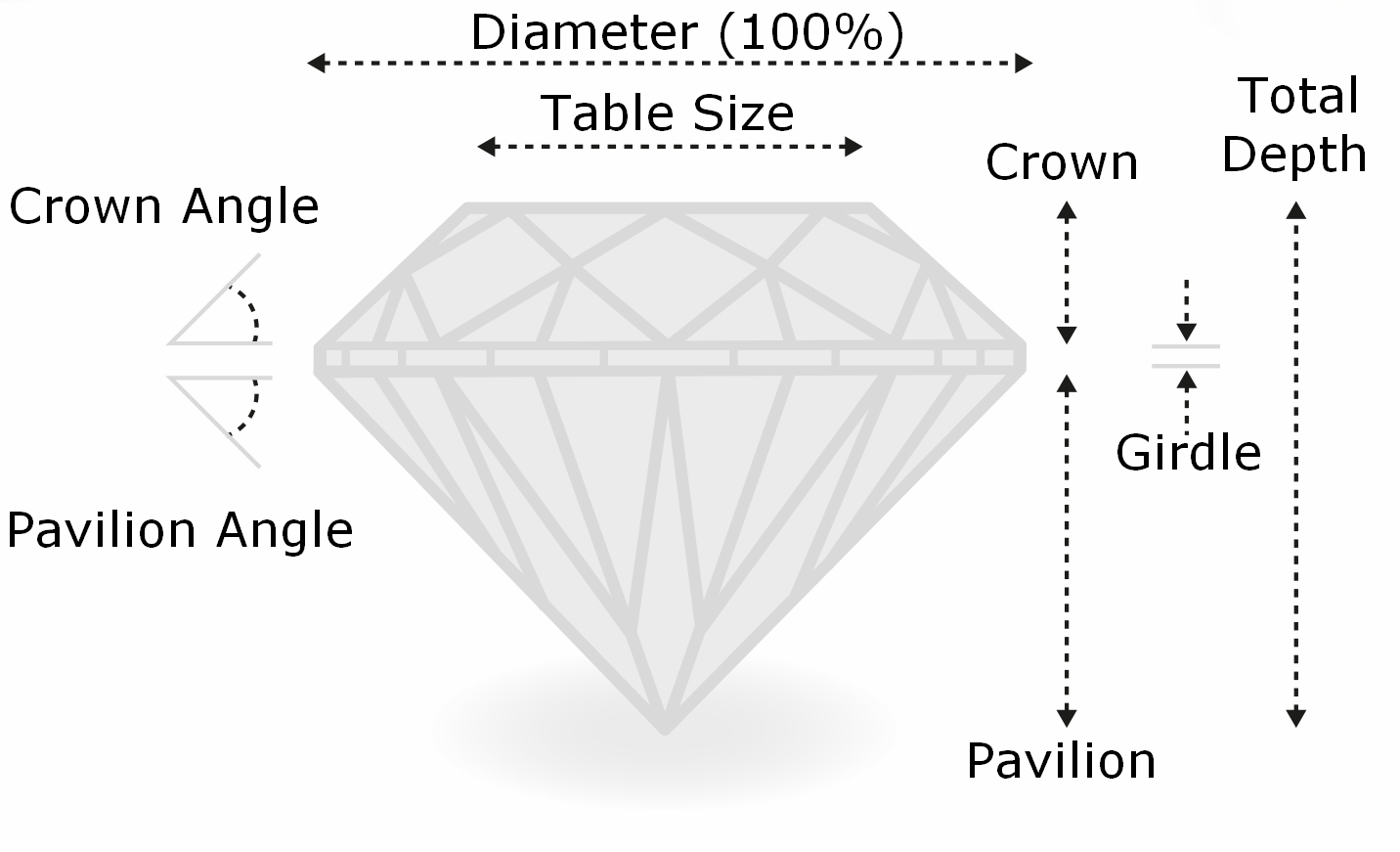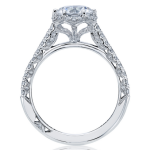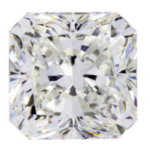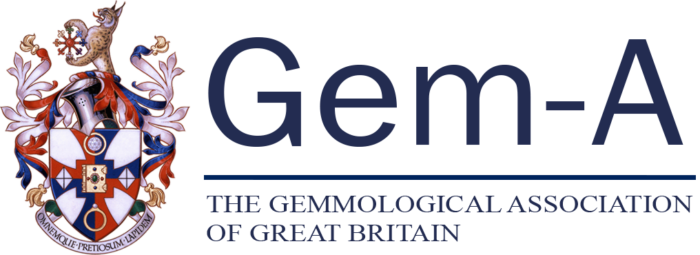Diamond cut is the single most important characteristic in a diamond. In fact, no other characteristic has a greater influence on a diamond’s appearance than it’s cut.
When a diamond is first mined, it is in its rough state a diamond cutter has the task of evaluating this crystal to determine which shape and proportions would best optimize its natural formation. In other words, a diamond is cut based upon the original shape of the rough stone, elimination of inclusions and flaws, the preservation of weight and the popularity of certain shapes.
A diamond’s cut refers to the arrangement of facets and proportions of the diamond, where proportions refers to the relationship between the sizes and angles of various facets.
Proportions vs. Light Performance
A diamond’s cut grade is typically evaluated on it’s overall proportions, symmetry and polish. However, a more advanced system has evolved over time to include a diamond’s light performance or the amount of light that is reflected back through the crown from the pavilion, to the observer. Thus there is the difference in the industry of evaluating cut quality by 1) proportions vs. 2) light performance. Light performance is further evaluated by:
- “Brilliance” is the term used when referring to how much white light is reflected back from within the diamond
- “Fire” or dispersion, refers to the different colors that are seen when the light is refracted from a diamond
- “Scintillation” refers to the shimmering effect or sparkle that is a result of both brilliance and fire and can be further divided into ‘flash scintillation and fire scintillation’

A diamond’s cut determines its light performance or “brilliance”. From Left: a shallow cut diamond, an ideal cut diamond and a steep/deep cut diamond.
The Importance of the Pavilion
The most important factor in light performance in diamonds is accurate pavilion depth and angles.
Gemmologists tend to agree that the best cut diamonds are the ones that follow a set mathematical formula to maximize their brilliance. This mathematical formula is found in a diamond’s facet angles and proportions. You may wonder why there would be anything other than ‘ideal’ cut diamonds available in the marketplace if we already know that cut = brilliance = beauty. The reason for this is due to the substantial price increase for larger carat weight diamonds.
Taking advantage of the larger payouts, diamond cutters have notoriously cut diamonds for weight retention rather than beauty. Therefore the vast majority of diamonds found in the marketplace are diamonds with steep crowns and deep pavilions (image on far right above) or in some cases with shallow crowns and pavilions (image on far left above). In either case you will end up with a diamond that leaks light through the bottom or sides of the pavilion making the diamond dark, dull, and lifeless.
In brilliant cut diamonds (as opposed to step cut) the angle between the pavilion facets and the girdle is the most important, as this controls the production of brilliance by reflecting rays of light from the back facets. Therefore, diamonds with pavilion angles close to 41° tend to produce maximum internal reflection. For round brilliant diamonds, ODBA recommends a pavilion angle between 40.2° and 41.2°.
Crown Angle
Along with the pavilion angle, the correct combination of a corresponding crown angle is also a critical aspect to creating optimized light reflection. These two factors work in harmony together. For example, if a pavilion angle is a little too steep then a shallow crown is cut to compensate. A shallow pavilion angle might be balanced with a slightly steeper crown angle. Therefore, the pavilion and crown angles in any given diamond will need to work together to create optimum light reflection.
Additionally, changing the crown angle, or height, and thus altering the table size will affect the balance of brilliance and fire seen in the stone. For example, a large table and a shallow crown will show greater brilliance. Alternatively, a deep crown and small table will result in greater fire. The trick is to balance these proportions together resulting in an equal distribution of brilliance vs. fire.
Table
The size of the table (flat large facet on crown of the diamond) affects both light reflection and contrast patterning. When looking down into the crown of a diamond, the size of the table affects it’s reflection (center star) in the center of the diamond at the culet.
Pavilion Facets
Diamonds with ideal cut proportions are cut in such a way as the pavilion facets serve as mirrors and reflect light back up through the crown, thereby increasing overall brilliance or white light return. Diamonds with average/poor cut proportions tend to have pavilion facets that serve as windows where light simply passes straight through, thereby ‘leaking light’.
Light Performance
Evaluating diamond cut used to be a very complex and somewhat confusing concept to grasp. However, in the last 20 years gem labs and diamond enthusiasts have made considerable strides in research and technology to understand the complexity of light performance (brilliance) in polished diamonds. Now the average consumer can understand light performance like a professional without having to invest time and energy into a formal education. Tools such as AGSL’s ASET (Angular Spectrum Evaluation Tool) provide insightful data pertaining to a diamond’s light reflection, light leakage, contrast, and symmetry. Likewise, Ideal-Scope images also provide information pertaining to light return, light leakage, and contrast.

Anatomy of a round brilliant diamond.
Ideal-Cut Diamond Proportion Tolerances
Consumers may consult the large variance of proportion tolerances for a modern ideal cut round brilliant diamond, and this can be difficult to tell apart by the non-professional. For this reason, several grading methods have been developed to help consumers understand which diamonds offer better cuts.
Marcel Tolkowsky developed the first “ideal diamond” cut proportions in 1919. This American Standard (aka American Ideal Cut, Tolkowsky cut, and Tolkowsky Brilliant) is now widely accepted as the benchmark for an ideally proportioned diamond. Other gem labs use other terminologies to evaluate a diamond’s cut and these are referred to as the: AGS 000, Premium Cut, and Excellent Ideal Cut. The following is the AGSL range for Ideal cut diamonds:
- Table Size: 52.4% to 57.5% of the diameter
- Depth: 58.7% to 62.3%
- Crown Angle: 33.7 to 35.8 degrees
- Pavilion Angle: 40.1 to 41.2 degrees
- Girdle Thickness: thin to slightly thick
- Facets: 58 (57 if the culet is excluded)
- Polish & Symmetry: to very good
The approximate range for Super Ideal Hearts and Arrows diamonds proportions are:
- Table Size: 53% to 58% of the diameter (54 to 57 is favorable)
- Depth: 59.5 to 62.5% (60% to 61.7% is favorable)
- Crown Angle: 33.4 to 36.4 degrees (34 – 35 degrees is favorable)
- Pavilion Angle: 40.2 to 41.2 (40.6 to 40.8 degrees is favorable)
- Lower Girdle Half: 75 – 80% (77% is favorable)
- Star Facets: 40 – 58% (45 -50% is favorable)
- Girdle Thickness: thin to slightly thick
- Facets: 58 (57 if the culet is excluded)
- Polish & Symmetry: ideal
Despite the proportion tolerances listed above, many people erroneously think that as long as a diamond falls within these numbers in any combination, it will result in an ideal cut diamond. This is not true. There are numerous table %, depth %, crown and pavilion angle combinations that might result in an ideal cut diamond and others where they are completely off the mark. Please keep in mind that gem lab reports list proportions as rounded values and are not to be used as critical evaluation tools unless they have accompanying light performance information (AGS Platinum Diamond Quality Document, for example).
Gem Laboratories and Their Diamond Cut Grades
The only diamond laboratories that have specific cut grades for diamonds are GIA (Gemological Institute of America) and AGS (American Gemological Society). If you are going to purchase a diamond online, it would be best to stick with either of these two labs as they are the most consistent in grading practices.
With regard to GIA, their grading scale for a diamond cut is based on: Excellent, Very Good, Good, Fair and Poor. GIA’s standard for cut grades is more lenient than AGS and is based on cut proportions rather than light performance. Therefore you will find some diamonds within the GIA cut grade that wouldn’t make the AGS “Ideal” cut grade. For GIA graded diamonds, it’s best to pay special attention to a diamond cut proportions (table %, depth %, crown angle, and pavilion angle) on any given report, rather than just the grading category.
AGS’s grading scale for diamond cut is based on: Ideal, Excellent, Very Good, Good, Fair, and Poor. These values are attributed to a number scale from 0-10 (10 being very poor). American Gem Society Laboratories is leading the way in light performance technology and innovation. They are the lab that uses ASET images on their Platinum Diamond Quality Document to further showcase how well a diamond reflects light. This is truly the way forward and I hope that other labs soon catch on to this. (More about AGSL’s Light Performance Cut Grade)
A helpful visual depiction of how both GIA and AGS cut grades compare to each other can be seen in the chart below:

A visual representation of GIA vs AGS cut grades. Notice how GIA’s top cut grade of ‘Excellent’ falls within the first two cut grades of AGS. The result is tighter parameters and more consistent cut quality among AGS ‘Ideal’ cut diamonds.
Round, Princess and Cushion – The Only Ideal Shapes
Because the round brilliant, princess and cushion shapes are the most popular, it makes sense that the most research and attention have been given to perfect them. Round brilliant diamonds are the most popular diamond shape because it is the only shape that is perfectly symmetrical and allows for the most amount of light to be reflected throughout it’s internal facet structure. Princess cut diamonds are a second popular choice because it comes very close to the brilliance of a round brilliant cut, but offers a different more modern look with pointed edges. Cushion cut diamonds are regaining their popularity as they offer an old-world class with a different look/feel.
If you are looking for the most perfectly cut round, princess or cushion cut diamonds you will have to pay attention to their light performance. Popular diamond vendors like Brian Gavin Diamonds specialize in super-ideal hearts and arrow diamonds, ideal cut princess cut diamonds, and super-ideal cushion cut diamonds. I highly recommend their attention to detail in all three of these popular shapes.
Other Diamond Shapes/Cuts: Oval, Marquise, Pear, Heart, Cushion, Radiant, Emerald, Asscher
For people that are looking to purchase diamonds that are not round, princess, or even cushion then you will need to focus on a diamond’s proportions very carefully. These diamonds do not have a cut grade given to them by a gem lab, so don’t expect to find an “excellent” or “ideal” oval cut diamond. They don’t exist. Although I will say that some vendors do try to help the consumer out by attributing their own ‘cut’ grade to a fancy shaped diamond. You’ll see that this is the case if you use the ODBA Diamond Search tool. This isn’t cause for alarm, it’s just where the industry is at at the moment.
Remember, ultimately the only real way to purchase a diamond is to actually visually see it. In many ways the internet provides a more thorough review of diamonds than a consumer would ever hope to receive in an average retail store. Bright lights and sales talk may only get you so far.
The Holloway Cut Advisor (HCA Tool) – Light ‘Predictor’
The HCA (Holloway Cut Advisor) is a free algorithmic tool that is used to predict light performance for round brilliant diamonds only. This tool is meant to be used as an elimination tool, to discard obvious poor proportion combinations for consumers that have no other means to evaluate a diamond other than table %, depth %, crown and pavilion angles. As mentioned above, proportion tolerances can be used as a guide but not final confirmation for evaluating a diamond’s overall cut quality. The tool itself says, “use it only to reject likely bad performing diamonds to narrow down your final selection. Ideal-Scope images and independent appraisers can help after that.” Only use the HCA score to vet out poor performing diamonds. Your final decision on whether to purchase a diamond or not should be done via actual magnified images and light performance information. So, this should hopefully clear up any confusion on when to use this tool and when to not use it.
ODBA Recommends








